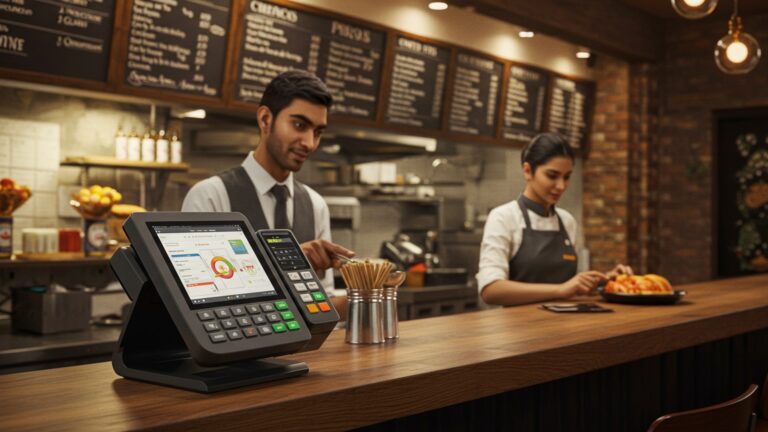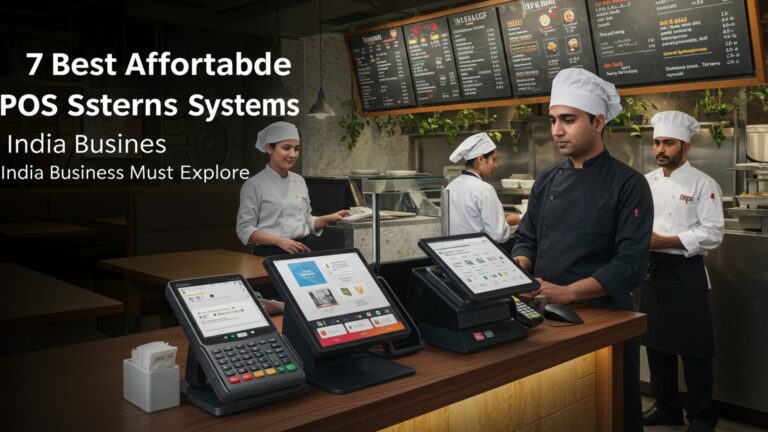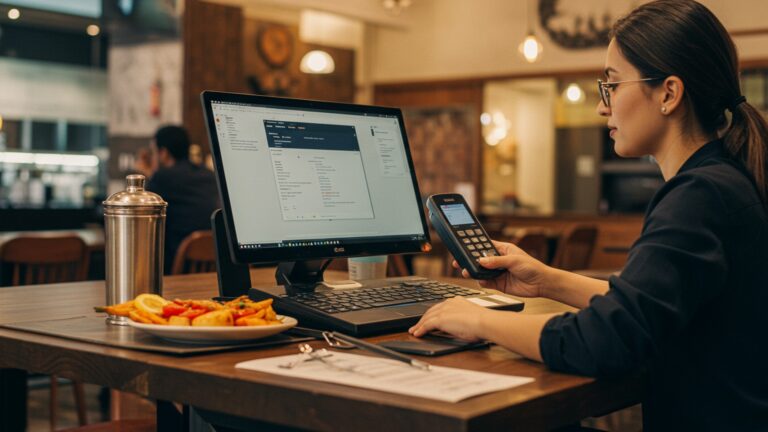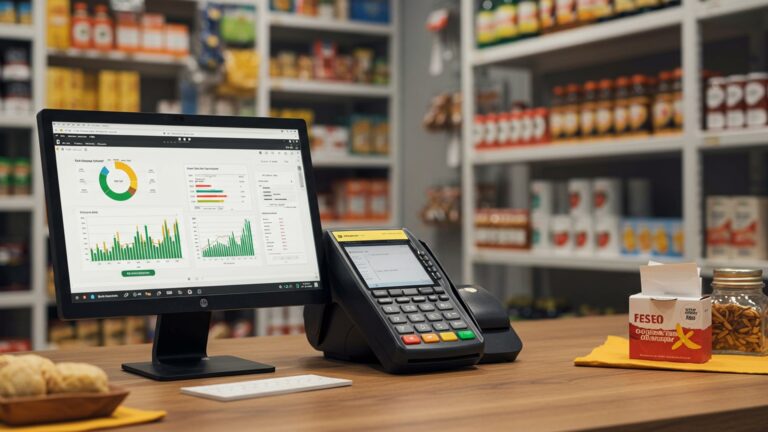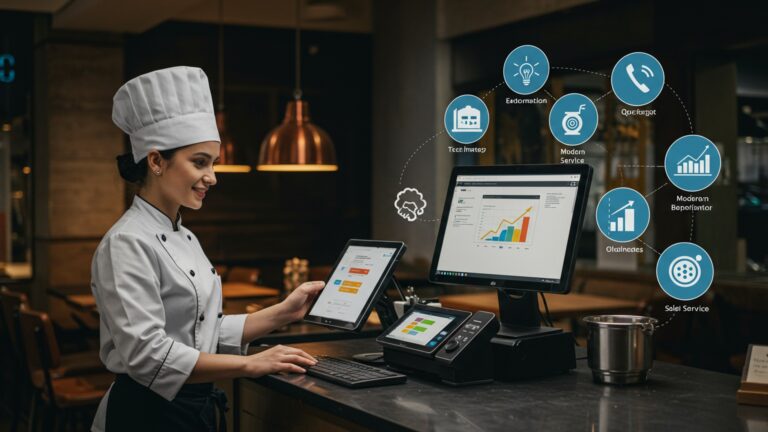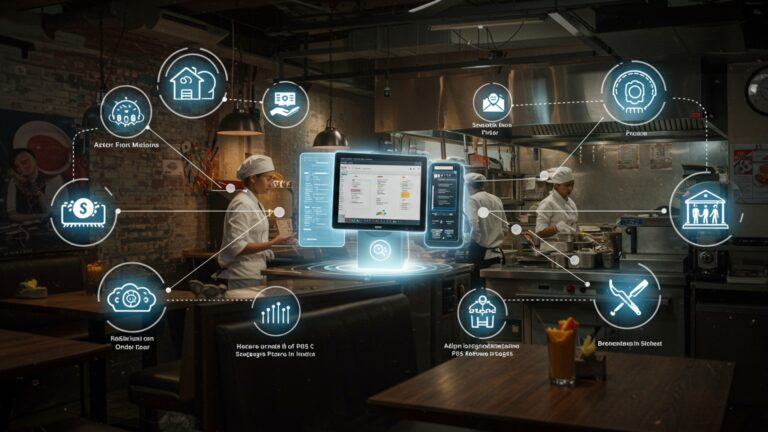Top 7 Best POS Systems for Indian Restaurants How to Choose
Indian restaurants, with their diverse menus, intricate order flows. high customer turnover, demand more than just a basic billing system. The digital transformation sweeping India, particularly with the rise of online food delivery platforms and UPI payments, necessitates a smart, integrated best POS system for restaurants India. Legacy systems simply cannot keep pace with dynamic KOT management, real-time inventory for regional specialties, or seamless integration with aggregators like Zomato and Swiggy. Choosing the right technology is no longer an option but a strategic imperative to optimize operations, enhance customer experience. ensure sustained profitability in a highly competitive market.
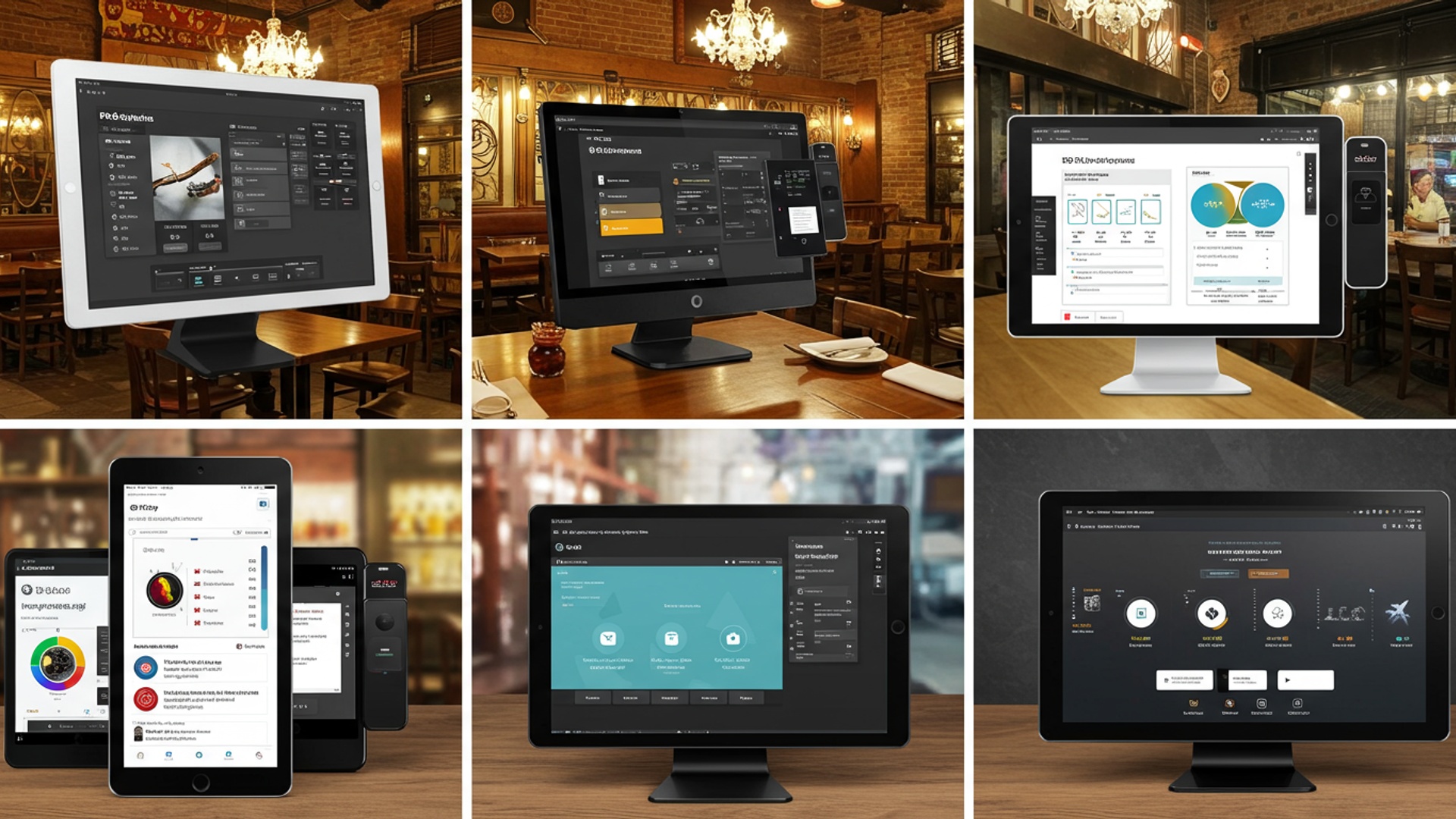
Understanding the Core: What is a POS System?
In the vibrant and fast-paced world of Indian restaurants, efficiency is not just a buzzword – it’s the recipe for success. At the heart of this efficiency lies a robust Point of Sale (POS) system. But what exactly is a POS system? Simply put, a POS system is a combination of hardware and software that allows businesses to process sales transactions, manage inventory, track customer data. streamline various operational aspects.
For an Indian restaurant, this means far more than just ringing up bills. Imagine a busy lunch hour: orders are flying in, tables are turning over rapidly. multiple payment methods are being used. A modern POS system acts as the central nervous system, connecting the kitchen, front-of-house. back-office operations. It automates tasks, reduces human error. provides invaluable insights into your business performance. Without a reliable POS system, managing the complexities of an Indian restaurant, from tracking specific spices to handling diverse payment options like UPI, cash. card, would be a monumental challenge.
Key Features Every Indian Restaurant POS Needs
Choosing the best POS system for restaurants India requires a deep dive into specific features that cater to the unique demands of the Indian culinary landscape. Not all POS systems are created equal. what works for a retail store won’t necessarily cut it for a bustling chaat shop or a fine-dining Indian eatery. Here are the critical features to look for:
- Billing & Order Management
- Inventory Management
- Customer Relationship Management (CRM)
- Reporting & Analytics
- Online Ordering & Delivery Integration
- Multi-location Management
- Payment Processing
- Staff Management
- Regional Language Support
This is the core. It should handle dine-in, takeaway. delivery orders seamlessly. Essential components include Kitchen Order Ticketing (KOT) generation, table management (booking, allocation, splitting bills). customizable menu options for various Indian dishes, thalis. combos.
Crucial for Indian restaurants where raw materials (spices, vegetables, specific grains) are numerous and often perishable. A good system tracks ingredients down to the gram, alerts you when stock is low, helps manage waste. even suggests reordering based on sales trends. This directly impacts food cost control.
Understanding your customers is key. A POS with CRM capabilities can store customer contact data, order history, loyalty points. preferences. This allows for personalized marketing, special offers (e. g. , “Buy one Biryani, get a free Gulab Jamun”). better customer retention.
Data is power. The best POS system for restaurants India offers comprehensive reports on sales, popular dishes, peak hours, staff performance. inventory turnover. These insights are vital for making informed business decisions, optimizing your menu. identifying areas for improvement.
With the rise of food delivery platforms like Swiggy and Zomato, seamless integration is non-negotiable. Your POS should consolidate orders from multiple channels into a single interface, preventing missed orders and streamlining delivery logistics.
If you operate multiple outlets or plan to expand, your POS system must support centralized management. This includes unified menus, pricing, inventory. reporting across all branches, providing a holistic view of your entire business empire.
Indian customers use a diverse range of payment methods. Your POS must support cash, credit/debit cards, UPI (Google Pay, PhonePe, Paytm), digital wallets. even custom payment options. Contactless payment capabilities are also becoming increasingly crucial.
Track employee attendance, manage shifts, assign roles with specific permissions. even integrate with payroll systems. This ensures accountability and operational smoothness.
Given India’s linguistic diversity, a POS system that supports regional languages for KOTs or customer-facing screens can significantly improve communication and efficiency, especially in the kitchen or for local staff.
How to Choose the Best POS System for Your Indian Restaurant
Selecting the ideal POS system is a strategic decision that can significantly impact your restaurant’s profitability and operational efficiency. Here’s a step-by-step guide to help you navigate the choices and find the best POS system for restaurants India that fits your unique needs:
Assessing Your Restaurant’s Needs
Before even looking at systems, grasp your own operations. Are you a small cafe, a large banquet hall, a chain of fast-food outlets, or a fine-dining establishment? Each has different requirements. Consider:
- Size and Scale
- Cuisine Type
- Budget
A small cafe might need basic billing and inventory, while a multi-location chain requires robust centralized management.
Indian cuisine often involves complex recipes and numerous ingredients. Your POS must handle detailed inventory tracking for this.
POS systems come with varying pricing models. Determine what you can realistically afford for initial setup and ongoing subscriptions.
Scalability
Your restaurant might start small. with success, it could grow. Choose a system that can scale with you. Can it handle more terminals, more locations. increased transaction volumes without a complete overhaul? A scalable system is a long-term investment.
Ease of Use
Your staff, from managers to servers, will interact with the POS daily. An intuitive, user-friendly interface reduces training time, minimizes errors. speeds up service. A complex system, no matter how feature-rich, will only frustrate your team.
Integration Capabilities
Does the POS integrate with other essential software you use or plan to use? This includes accounting software (Tally, QuickBooks), online ordering platforms (Swiggy, Zomato, Dotpe), payment gateways. loyalty programs. Seamless integration prevents data silos and enhances overall efficiency.
Customer Support
When issues arise, prompt and effective support is crucial. Look for providers offering 24/7 support, dedicated account managers. multiple channels (phone, email, chat). Local support teams in India can be a significant advantage, understanding specific regional challenges.
Pricing Models
POS systems typically come with different pricing structures:
- Subscription-based
- One-time purchase
- Hardware Costs
Monthly or annual fees, often tiered based on features or number of terminals. This is common for cloud-based systems.
You own the software license upfront. might pay for updates and support separately.
Don’t forget the cost of hardware like POS terminals, printers, cash drawers. kitchen display systems (KDS). Some providers offer bundles.
Security
Your POS handles sensitive data, including financial transactions and customer insights. Ensure the system offers robust security features, including data encryption, secure payment processing (PCI DSS compliance). role-based access control to prevent unauthorized use.
Top 7 Best POS Systems for Restaurants in India
To help you in your quest for the best POS system for restaurants India, we’ve compiled a list of leading options that are well-regarded and widely used in the Indian market. Each offers a unique set of strengths tailored to different restaurant needs.
1. POSist
POSist is a cloud-based restaurant management platform that offers a comprehensive suite of tools. It’s designed to cater to a wide range of F&B businesses, from standalone cafes to large restaurant chains.
- Key Features
- Pros
- Cons
- Ideal For
Advanced inventory management, robust billing, KOT management, CRM, detailed analytics, online ordering integration, multi-location management. strong reporting. It’s known for its scalability and extensive feature set.
Highly scalable, feature-rich, excellent for chains, good integration capabilities with third-party apps, strong analytics.
Can be more expensive for smaller operations, initial setup might require more effort.
Mid-sized to large restaurant chains, fine-dining establishments. businesses planning significant expansion.
2. Petpooja
Petpooja is a popular cloud-based POS system known for its extensive integrations with various online food aggregators and payment gateways, making it a favorite among many Indian restaurants.
- Key Features
- Pros
- Cons
- Ideal For
Seamless integration with Swiggy, Zomato, Dotpe, etc. , comprehensive billing, inventory management, customer feedback system, analytics. an easy-to-use interface.
Excellent integration with delivery platforms, user-friendly interface, competitive pricing, strong local support.
Some advanced features might require add-ons, less customization flexibility compared to enterprise solutions.
Cafes, quick-service restaurants (QSRs), cloud kitchens. restaurants heavily reliant on online delivery.
3. LimeTray
LimeTray offers an integrated platform for restaurants, focusing not just on POS but also on online ordering, marketing. customer engagement. They provide a holistic approach to restaurant technology.
- Key Features
- Pros
- Cons
- Ideal For
POS for billing and operations, integrated online ordering system (website & app), CRM, digital marketing tools, detailed analytics. inventory management.
End-to-end solution for online presence and in-store operations, strong focus on customer engagement and marketing, good for brand building.
May be more complex for very small businesses, pricing can be higher due to the comprehensive suite.
Restaurants looking for a complete digital presence solution, those focused on direct online orders. growing brands.
4. Dotpe
While primarily known for its online ordering platform and digital storefronts, Dotpe also offers a robust POS solution designed for Indian businesses. Its strength lies in enabling restaurants to go digital swiftly.
- Key Features
- Pros
- Cons
- Ideal For
Integrated online ordering via WhatsApp/QR codes, billing, inventory, payment acceptance (UPI, cards), CRM. basic reporting. Focus on easy digital transformation.
Extremely easy to set up and use, strong focus on direct online orders and reducing aggregator commissions, affordable.
May lack some of the deeper, specialized features of larger POS systems, primarily cloud-based with less offline capability.
Small to medium-sized restaurants, cafes. cloud kitchens aiming to establish a direct online ordering channel efficiently.
5. TMBill
TMBill is a popular choice among Indian small and medium-sized restaurants, offering a simple yet effective POS solution that is often praised for its affordability and local support.
- Key Features
- Pros
- Cons
- Ideal For
Fast billing, KOT management, inventory control, basic reporting, employee management. support for various payment methods. It’s often chosen for its straightforward functionality.
Cost-effective, user-friendly, good for small businesses, decent customer support in regional areas.
Lacks some advanced analytics and integration capabilities of higher-end systems, may not scale as well for large chains.
Small cafes, standalone restaurants, takeaway joints. businesses with a tighter budget.
6. RanceLab FusionResto
RanceLab offers a comprehensive restaurant management software called FusionResto, which goes beyond basic POS to include ERP-like features tailored for the food and beverage industry.
- Key Features
- Pros
- Cons
- Ideal For
Advanced inventory management (recipe costing, waste management), centralized kitchen management, loyalty programs, financial accounting integration, detailed BI reports. multi-store capabilities.
Very comprehensive for inventory and cost control, robust reporting, suitable for complex operations and chains, strong accounting integration.
Can be more complex to implement and use, potentially higher cost, might be overkill for very small businesses.
Large restaurants, chains with centralized kitchens, catering businesses. those needing deep financial and inventory control.
7. Marg ERP (Restaurant Module)
Marg ERP is a well-established name in India for accounting and inventory software. Their restaurant module extends their robust ERP capabilities to F&B businesses, offering a familiar interface to many Indian businesses already using Marg for other purposes.
- Key Features
- Pros
- Cons
- Ideal For
Integrated billing, inventory management (especially strong for raw materials and recipe mapping), financial accounting, GST compliance, supplier management. basic reporting.
Strong integration with financial accounting, robust inventory control, familiar to businesses already using Marg ERP, good for tax and compliance.
Primarily an accounting/ERP system with a POS module, so the dedicated F&B features might not be as specialized as pure-play POS systems. Interface might feel less modern to some.
Restaurants that prioritize strong financial integration and inventory control, especially those already using Marg ERP for other business operations.
Comparison Table: Best POS System for Restaurants India
| System Name | Key Strengths | Ideal For | Pricing Model (General) |
|---|---|---|---|
| POSist | Scalability, comprehensive features, advanced analytics, chain management. | Mid to large chains, fine dining, ambitious growth. | Subscription (tiered) |
| Petpooja | Seamless aggregator integration, user-friendly, competitive pricing. | QSRs, cloud kitchens, delivery-heavy restaurants. | Subscription |
| LimeTray | Integrated online ordering, marketing, customer engagement, holistic solution. | Growing brands, direct online order focus, marketing-savvy restaurants. | Subscription (package-based) |
| Dotpe | Easy digital storefronts, WhatsApp/QR ordering, direct customer engagement. | Small to medium restaurants, cafes, digital-first approach. | Subscription (often free tier + transaction fees) |
| TMBill | Affordable, simple, fast billing, good local support. | Small cafes, standalone restaurants, budget-conscious businesses. | One-time/Subscription (basic) |
| RanceLab FusionResto | Deep inventory control, recipe costing, centralized kitchen management, ERP-like features. | Large chains, catering, complex operations needing strong cost control. | Subscription/One-time |
| Marg ERP (Restaurant Module) | Strong financial accounting integration, robust inventory, GST compliance. | Restaurants prioritizing accounting and inventory, existing Marg users. | One-time/Subscription |
Conclusion
Choosing the right POS is more than a technical decision; it’s a strategic investment that profoundly impacts the efficiency and customer experience of your Indian restaurant. Focus on systems that truly grasp the nuances of Indian cuisine – think intricate thalis, customisable spice levels. seamless integration with delivery giants like Swiggy and Zomato. This ensures your operations, from order taking to precise inventory management of specific masalas, run without a hitch. My personal tip is to always conduct a thorough trial during your restaurant’s peak hours. I’ve observed many restaurateurs overlooking the importance of real-world stress tests, only to face glitches when the kitchen is bustling. Moreover, with recent developments in digital payments, ensure your chosen system handles UPI, cards. e-wallets effortlessly, reflecting India’s evolving transaction landscape. Opt for a cloud-based solution; it offers the flexibility and real-time insights crucial for navigating today’s dynamic market. Ultimately, the right POS empowers you to elevate your customer experience, streamline billing. allow your passion for authentic Indian food to truly shine.
More Articles
Guide to 8 Top Restaurant POS Software Benefits for Indian Businesses
How to Choose the 5 Best POS System Options for Your India Restaurant
Master 7 Essential Android POS Tips for Indian Restaurant Success
Discover 5 Best Restaurant POS Systems for Small Eateries in India
Master 8 Ways Restaurant Billing Software Boosts Indian Business
FAQs
Why do Indian restaurants need a specific POS system?
Indian cuisine often involves complex orders with many customisations like spice levels, combo meals. specific ingredient tracking. A dedicated POS system can handle these nuances better, manage intricate inventory. streamline operations for varying dining experiences like dine-in, takeaway. delivery unique to Indian restaurants.
What are the most essential features to look for in a POS for my Indian restaurant?
Key features include robust inventory management (tracking numerous ingredients for diverse dishes), flexible order customisation (for spice levels, dietary needs), efficient table management, seamless online ordering and delivery integration, loyalty programs for repeat customers. detailed reporting for sales and menu performance analysis.
How much should I expect to pay for a good POS system for my Indian restaurant?
Costs can vary widely. Many systems operate on a subscription model, charging monthly or annually per terminal, ranging from affordable to premium tiers. You’ll also need to factor in hardware costs like terminals, printers. card readers. Some providers offer free trials, which are a great way to test before committing.
Is it complicated to set up and start using a new POS system?
Most modern POS systems are designed with user-friendliness in mind. While initial setup involves menu entry and staff training, providers often offer comprehensive guides, dedicated support. sometimes even on-site assistance to ensure a smooth transition. Data migration from an old system can be assisted by the provider.
Can these POS systems handle online orders and food delivery platforms?
Absolutely! A top-tier POS system for Indian restaurants should integrate seamlessly with popular online food aggregators (like Swiggy and Zomato in India) or offer its own built-in online ordering portal. This is crucial for managing your digital footprint and expanding your delivery and takeaway services efficiently.
What’s the best way to pick the right POS system from the top contenders?
To choose the best one, first identify your restaurant’s specific needs and budget. Consider factors like your menu complexity, number of locations, required integrations (accounting, online ordering). the level of customer support you’ll need. Request demos from your top choices and compare their features, pricing. user reviews before making a decision.
What kind of customer support should I expect from a POS provider?
Reliable customer support is super essential. Look for providers offering 24/7 assistance via phone, chat, or email. Check if they have local support teams or resources tailored to the Indian market. Prompt and effective support can be a lifesaver when you encounter issues during busy service hours.

